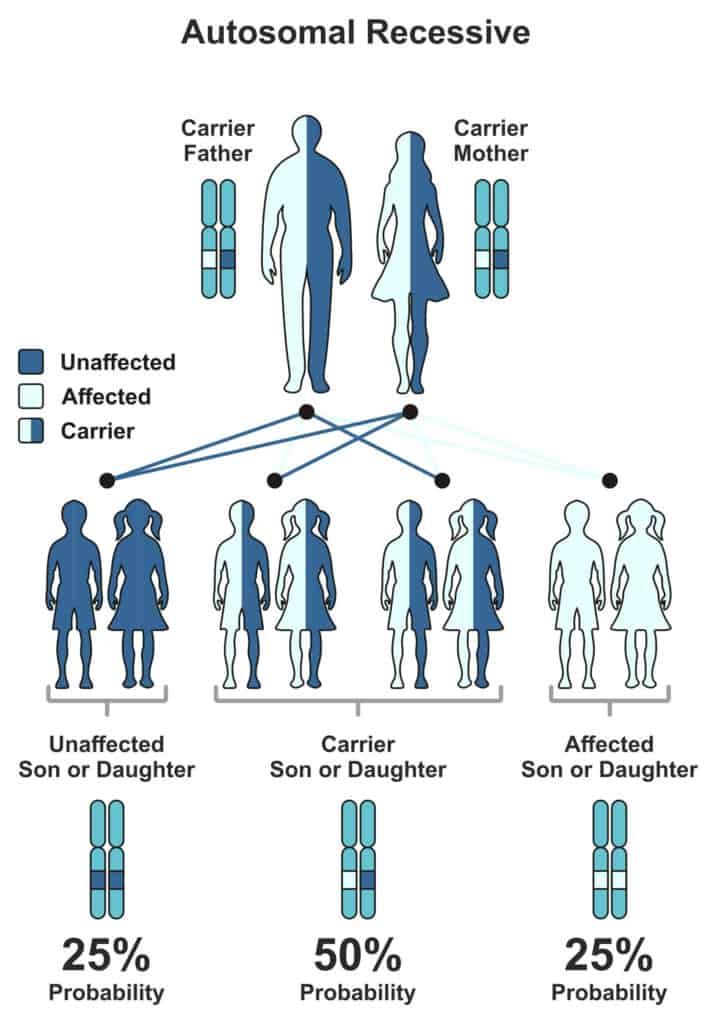Less than 2% of the global population carries the red hair gene, one of the most intriguing human traits. It may seem like common knowledge that red hair originated in the Viking lands of Scandinavia. However, research points to red hair originating in Central Asia as a mechanism against the harsh sun. Eventually, it spread to remote regions like Ireland, Scotland, and Scandinavia, where it is most abundant today. This article will help you learn more about the red hair gene: why some people have red hair, how the gene travels down generations, how red hair can affect your skin, and how to know if you could be a carrier of the gene.
Why Do Some People Have Red Hair?
Melanin, a coloring pigment produced by the melanocyte cells in the hair, determines hair color.
When melanocytes produce an excess of eumelanin, a dark-colored melanin pigment, people get black or brown hair.
Those who don’t produce enough of this pigment have blond hair.
In rare cases, the melanocytes produce another pigment called pheomelanin.
Pheomelanin is a yellow/reddish pigment responsible for the iconic red-colored hair.
The type of melanin pigment the melanocyte cells produce depends on a person’s genes.
Image: Types of Melanin Pigments
MC1R Gene, Melanin Pigments, and Red Hair
The MC1R gene is one of the strongest influencers of red hair.
Thus, it is also called the red hair gene.
It instructs your body to produce the melanocortin-1 receptor that decides which type of melanin the melanocytes produce.
When the receptor is active, it encourages the melanocytes to produce eumelanin, leading to darker hair color.
When the receptor is blocked or inactive due to mutations in the MC1R gene, it produces pheomelanin instead, leading to reddish hair color.
Pheomelanin production causes individuals to grow red hair.
How Do You Inherit The Red Hair Gene?
Red hair is a recessive genetic trait.
This means that a person must inherit the genetic change associated with red-colored hair from both biological parents for it to be active.
Many people may be carriers of one copy of the mutated gene and still have darker hair color.
A study reports that up to 40% of people in Scotland carry at least one copy of the mutated gene despite only 13% having red hair.

How To Know If You Carry The Red Hair Gene
In some families, a child could mysteriously be born with red hair despite generations of people having darker hair.
The darker hair implies that the previous generations were all silent carriers of the gene.
Genetic testing could predict an interesting turn of events like this.
Genetic testing can identify if the parents are carriers of the MC1R gene mutations and predict whether a child will have red hair.
Health Conditions Associated With The Red Hair Gene
The effects of carrying the MC1R gene don’t end with the hair alone.
A few conditions seen in such individuals include:
- Higher production of vitamin D
- Increased pain perception
- More prone to sunburns
- Susceptibility to Parkinson’s disease
- Greater risk of skin, ovarian, colorectal, and cervical cancers
Genetic testing to know whether you carry the red hair gene is thus beneficial for you and your future generations.
How Likely Am I to Have a Child With Red Hair?
The following scenarios will help you understand your likelihood of having a child with red hair.
Each scenario has a different genetic makeup of the biological parents involved.
Scenario 1: No Carriers Of The Gene
Both parents have dark hair.
In this case, there is a practically 0% chance that your child will be red-haired.
Scenario 2: Two Carriers Of The Gene
Both parents have dark hair and carry one copy of the gene each.
In this case, there is a 25% chance that the child will have red hair and a 50% chance that the child may have dark hair but carry the red gene.
Scenario 3: One Red-Haired Parent And One Non-Carrier Of The Gene
One parent has two copies of the gene, and the other has none.
In this case, the children may carry the red hair gene but will not have red hair.
Scenario 4: One Red-Haired Parent And One Carrier Of The Gene
In this case, there is a 50% chance the child will be red-haired and another 50% chance that the child will be dark-haired and a carrier of the red hair gene.
Scenario 5: Two Red-Haired Parents
In this case, all the children will also have red hair.
Summary: The Red Hair Gene
- Hair color is inherited from the parents, and only 1-2% of the world's population have red hair.
- Red hair results from the production of a reddish/yellow pigment called pheomelanin by the melanocytes of the hair cells.
- The MC1R gene is responsible for deciding hair color by controlling the functioning of the Melanocortin 1 Receptor.
- Mutations in the MC1R gene lead to an inactive Melanocortin 1 Receptor. This produces pheomelanin pigments, causing red hair.
- Red hair is a recessive genetic trait, meaning a person must inherit the abnormal gene variant from both parents for it to activate.
- Genetic testing may now help predict a child’s chances of inheriting red hair from the parents.
References
- https://www.livescience.com/26633-redhead-dna-gene.html
- https://www.thetech.org/ask-a-geneticist/what-are-my-chances-having-red-haired-child
- https://www.eupedia.com/genetics/origins_of_red_hair.shtml
- https://www.healthline.com/health/red-hair-blue-eyes
- https://www.ncbi.nlm.nih.gov/pmc/articles/PMC5958947/





